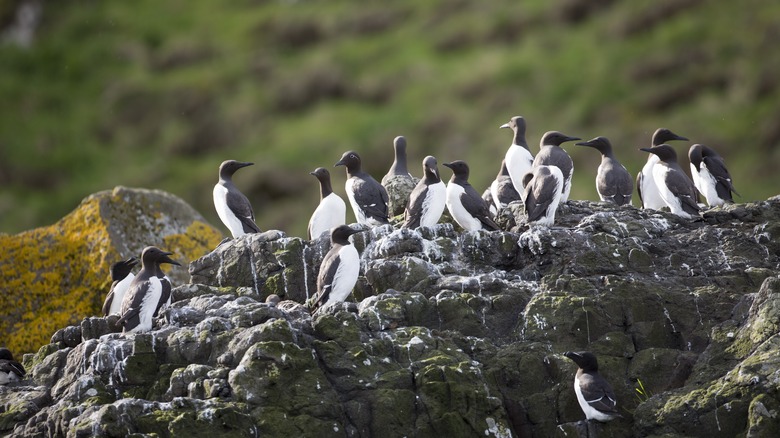The California Egg War You Never Knew About
If you were on an eternal hunt for eggs during the early days of the COVID-19 pandemic, you weren't the only one. According to Today, egg prices increased so much due to demand during the health crisis that a lawsuit was filed in the District Court for the Northern District of California alleging food retailers like Walmart, Costco, Trader Joe's, and Kroger had been price gouging.
As it turns out, though, this isn't California's first go-around with increased consumer demand for eggs and the astronomical pricing that came with it.
A previous historical panic to secure eggs was actually brought on by another type of rush: a gold rush. According to PBS, in the years that followed the incredible event of James W. Marshall striking gold at Sutter's Mill in 1848, around 300,000 people moved to the West Coast to try to recreate his luck. Because of this, food had to be imported for the amateur miners who brought little with them, and that gave merchants an economic edge. So much of an edge, that egg prices reached a dollar a piece in 1849 — a price we would scoff at even today!
The gold rush leads to an egg rush on an unsuspecting island
When eggs get scarce, you have to think outside of the hen house. During the gold rush, according to artist and historical chronicler Eva Chrysanthe, chickens became rare and people began to forage (via KQED). It was this foraging mentality that led a pharmacist, Doc Robinson, and his brother-in-law Orin to the Farallon Islands. The intimidating islands sound like something straight out of a King Kong movie, and according to SF Gate, they are 28 miles off the coast of San Francisco with likewise charming former nicknames like "Islands of the Dead" and "The Devil's Teeth" due to their jagged silhouette.
Though the Farallon Islands did not have a gigantic, tyrannical-but-endearing ape, they did have murre eggs. According to KQED, murres are penguin-like birds that lay eggs twice the size of common chicken eggs. Doc Robinson and Orin secured $3,000 worth of murre eggs from the island's steep cliffs on their first (and last) trip, realizing they themselves had no desire to return for those particular "island vibes" — but in so doing, they kicked off an "egg rush."
What happened next, in light of the gold rush, is probably not too surprising. According to author Peter White, the Pacific Egg Co. formed and claimed the island's eggs as theirs for the taking in 1851. Others arrived in pursuit of the precious goods and a fight eventually broke out resulting in at least one casualty. The federal government intervened and all commercial "eggers" were ordered off the island (via KQED), which meant a big win for the murres over their saboteurs.

